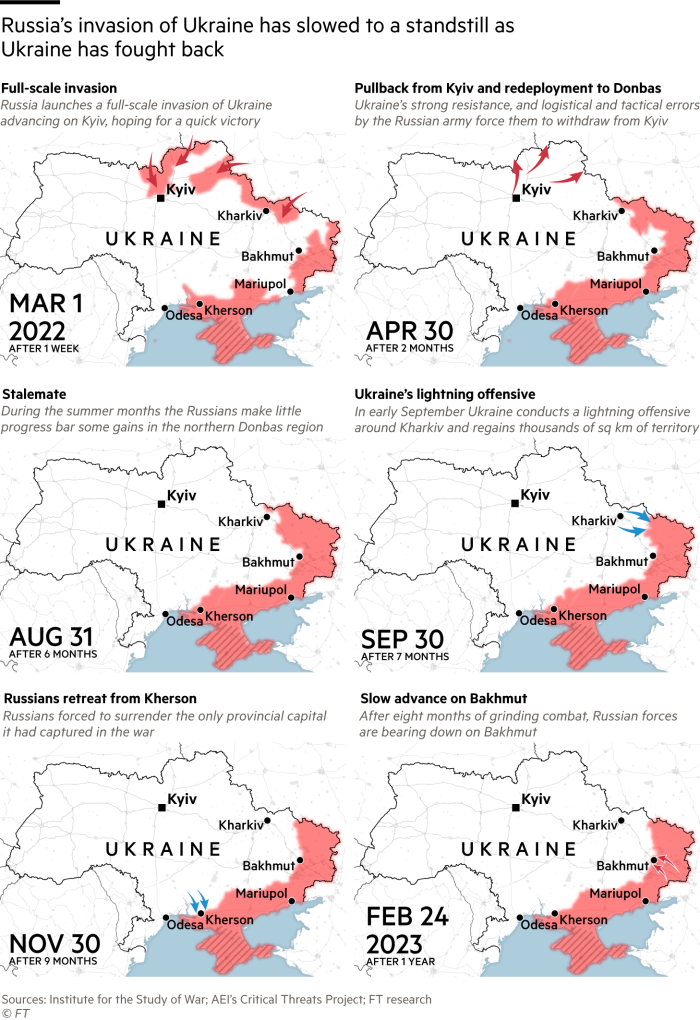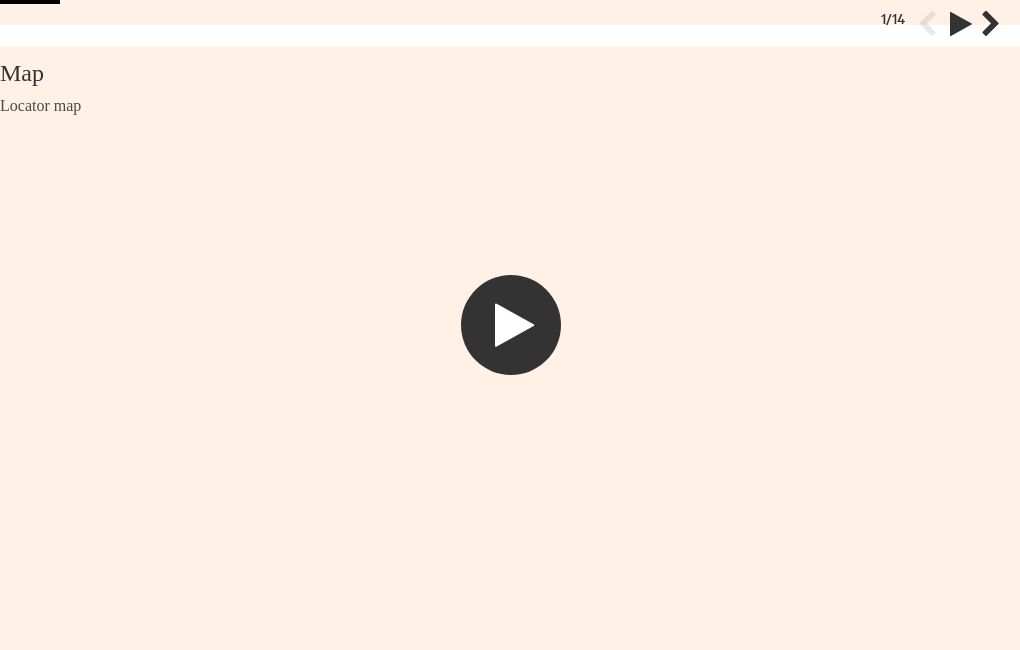Ukraine’s counteroffensive against Russia in maps: latest updates

Simply sign up to the War in Ukraine myFT Digest -- delivered directly to your inbox.
On February 24 2022, the world awoke to news that Russian tanks had rolled into Ukraine.
This page is regularly updated with the latest maps, charts, videos and satellite imagery showing military, environmental and humanitarian aspects of the war in Ukraine.
Latest situation
Russian forces have captured three more villages in Ukraine’s north-eastern Kharkiv region, as they press ahead with a new offensive intended to draw Ukrainian forces away from front lines in the east.
Since launching the operation on Friday, Russian troops have occupied about 10 settlements across 100 sq km of territory along Ukraine’s northern border.
Maps compiled by Deepstate, an open-source Ukrainian analysis group, indicated that Russia captured three villages on Sunday, and a battle is under way for control of Hlyboke, a village 40km north of Kharkiv.
Russia’s operations had previously been focused on the eastern Donetsk region of Ukraine, particularly around the critical stronghold of Chasiv Yar. But Ukrainian officials believe Russia now wants to draw Ukrainian forces away from the battles in the east, where Kyiv is outgunned and struggling to hold its defensive lines.
Serhiy Kuzan, chair of the Ukrainian Security and Cooperation Center think-tank, said Deepstate’s maps indicated that Russia had not managed to achieve the kind of breakthrough it did a few weeks ago around Ocheretyne, near the city of Avdiivka in Donetsk.
Other than encroaching on Kharkiv, Russia may also be seeking to push Ukrainian forces deeper into the country to get them out of range of the Russian city of Belgorod, just 30km north of the border with Ukraine, which has come under increasing artillery fire in recent months.
Ukraine’s general staff also said there was fighting around settlements in the south of Pylna and on the outskirts of Vovchansk. It added that reserves had been deployed to “stabilise the situation”.

Ukraine’s counteroffensive progress
With slow progress on its counteroffensive and Russia showing no sign of quitting, Ukraine faces a protracted war that will require long-term support from allies — who are also focused on the Israel-Hamas war.
Other maps and charts from the war
June 2023: Destruction of Kakhovka dam
Following the destruction of the Kakhovka dam in southern Ukraine on June 6, floodwaters devastated towns and villages downstream, with dozens of people perishing in the disaster amid patchy evacuation efforts in Russian-controlled territories. The flood also narrowed Ukraine’s attack options in its counteroffensive, which got under way in early June.
May 2023: Russian fortifications
Ukraine’s months-long preparation for its summer counteroffensive to try to wrest back occupied territory allowed Russia to fortify its positions along the almost 1,000km frontline.
Satellite images reviewed by the Financial Times and analysed by military experts revealed a multi-layered Russian network of anti-tank ditches, mazes of trenches, concrete “dragon’s teeth” barricades, steel “hedgehog” obstacles, spools of razor wire and minefields.
May 2023: Battle for Bakhmut
On May 21, Russia’s president Vladimir Putin hailed his first major victory since the early days of the full-scale invasion of Ukraine, claiming that Russian forces had captured the eastern city of Bakhmut, despite Kyiv insisting the battle “was not over”.
Putin said the Wagner paramilitary group had seized the Ukrainian city with help from Russia’s armed forces after months of bloody fighting that had caused more than 100,000 casualties and reduced the city to ruins.
Earlier in the year, satellite images from the Vuhledar area, south of Bakhmut in the Donetsk region, revealed the extent of damage in areas that had suffered intense artillery shelling.
September-November 2022: Ukraine retakes Kherson
A counteroffensive led to Ukraine liberating 3,000 sq km of territory in just six days, its biggest victory since it pushed Russian troops back from Kyiv in March.
Ukraine’s forces continued to push east, capturing the transport hub of Lyman, near the north-eastern edge of the Donetsk province, which it wrestled from Russian control on October 1.
The hard-fought victory came after nearly three weeks of battle and set the stage for a Ukrainian advance towards Svatove, a logistics centre for Russia after its troops lost the Kharkiv region in the lightning Ukrainian counteroffensive.
Ukrainian forces advanced into Kherson on November 11 after Russia said its forces had completed their withdrawal from the southern city, sealing one of the biggest setbacks to Putin’s invasion.
Kyiv’s progress and Moscow’s chaotic retreat across the Dnipro river under Ukrainian artillery fire meant Russia surrendered the only provincial capital it had captured in the war, as well as ceding strategic positions.

March 2022: Russia fails to capture Kyiv
The Russians were thwarted in Kyiv by a combination of factors, including geography, the attackers’ blundering and modern arms, as well as Ukraine’s ingenuity with smartphones and pieces of foam mat.

The refugee crisis
The number of Ukrainians fleeing the conflict has made it one of the largest refugee crises in modern history.

Sources: Institute for the Study of War, Rochan Consulting, FT research.
Cartography and development by Steve Bernard, Chris Campbell, Caitlin Gilbert, Cleve Jones, Emma Lewis, Joanna S Kao, Sam Learner, Ændra Rininsland, Niko Kommenda, Alan Smith, Martin Stabe, Neggeen Sadid, Liz Faunce and Dan Clark.
Based on reporting by Roman Olearchyk, Christopher Miller, Ben Hall, Max Seddon, John Paul Rathbone, John Reed, Guy Chazan, Henry Foy, Mehul Srivastava, Polina Ivanova and Tim Judah.








Comments